Office of the Dead, fol. 127v
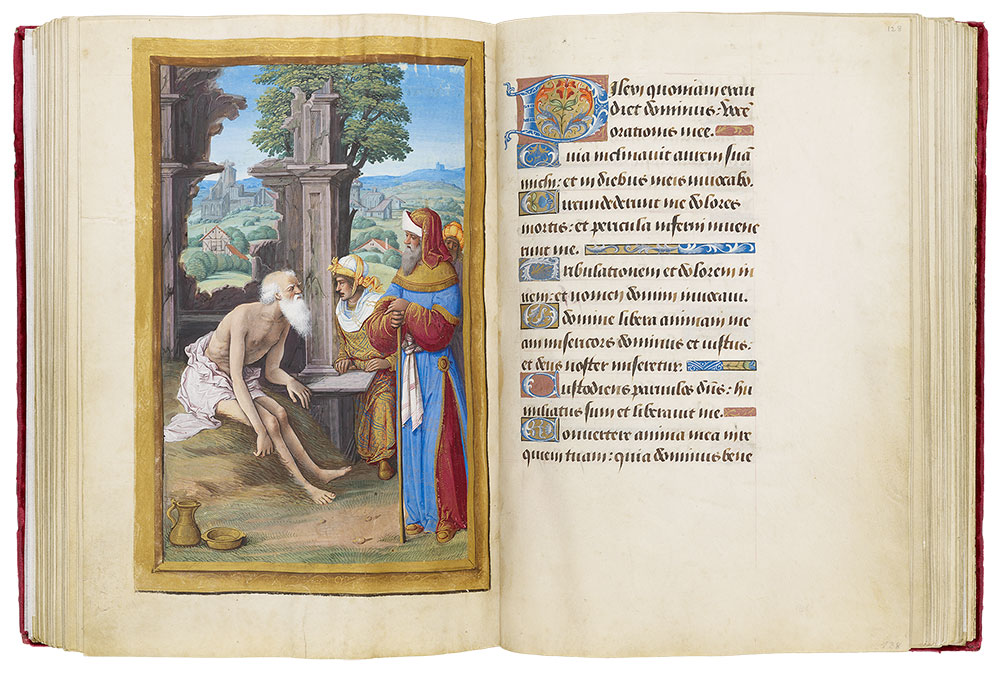
Vespers: Job on the Dungheap
Hours of Henry VIII
Illuminated by Jean Poyer
Gift of the Heineman Foundation, 1977
Vespers: Job on the Dungheap (fol. 127v)
This image of Job elegantly conveys some of the main themes found in the lessons: the brevity of life and its miseries, the constant request for deliverance, and above all, the conviction of faith that permits one to declare he knows that his Redeemer lives.
This miniature depicts Poyer's portrayal of the discourse between the three men that went in Job's favor. His friends incurred the wrath of God, who then instructed them, in a dramatic turnabout, to seek Job's intercession on their behalf, which he gave. Not surprisingly, some of the Church Fathers, such as Gregory the Great, regarded Job as a prophet of the general Resurrection of the Dead.
Although Poyer has depicted Job in a loincloth, he has not included the boils. According to Pope Gregory the Great (r. 590–604), Job sat on the dungheap so that he might consider the substance of the flesh and how quickly it returned to stench.
In medieval lore Job's friends attempt to convince him to give up his faith, but he remains steadfast. Elegantly dressed, they are wealthy, as Job was before God permitted Satan to test his faith. Job is not moved but patient, even though the youngest friend kneels in order to add direct eye contact to the persuasiveness of his argument.
Office of the Dead (fols. 127–67v)
The Office of the Dead usually followed the Penitential Psalms and Litany, shifting the focus of prayer from oneself to the deceased, a function that was more clearly evident from its old name, the Office for the Dead.
The Office of the Dead's importance is indicated by its length (it is second only to the Hours of the Virgin) and by the fact that it is exactly the same Office as found in Breviaries and Antiphonaries. The threat of long periods in the painful fires of purgatory was a serious matter, and anything that could be done to shorten or alleviate such suffering for loved ones had to be considered. Even though the Bible suggested that God would render to every man according to his works (Psalms 61:13), the early Church Fathers had already affirmed that prayers for the dead helped loose them from sins. St. Thomas Aquinas (1225–1274), likewise noted that charity extended not only to the living but also the dead and that punishments in purgatory could be entirely done away by a multiplicity of prayers, adding that those praying for the dead reaped benefits as well. The Councils of Lyons I (1254) and Florence (1439) both asserted that purgatory was a place of expiation and that prayers for the dead were important. Such prayers could aid suffering souls for sins that remained unexpiated by penance at the time of death. Since those in purgatory cannot pray for themselves, said Aquinas, their condition requires that we pray for them.
The Office, the present form of which goes back to the early ninth century, consists only of three Hours: Vespers, Matins, and Lauds; these were also known as "Placebo," "Dirige," and "Exultabant," respectively, after the first words of their opening antiphons. The second, "Dirige," gave rise to the present word dirge, referring to a mournful hymn at a funeral. Vespers was ideally prayed over the coffin in church on the evening before the funeral Mass. Monks were hired by the family to recite or chant it. Matins and Lauds were prayed, again by paid monks, on the morning of the funeral itself. The ordained, who recited the Office on a daily basis, provided an inspired model for the laity to pray it frequently at home. The purpose was the same, to help get the dearly departed out of purgatory as quickly as possible. As with most offices, each of the three Hours is composed of antiphons, psalms, versicles, and responses, except for Matins, which, as in the Hours of the Virgin, has three nocturns, each with three lessons. These psalms usually offer comfort to the dead; perhaps one of the most familiar is Psalm 22, the first recited in the second nocturn of Matins:
The Lord is my shepherd; I shall not want. He maketh me to lie down in green
pastures: he leadeth me beside the still waters. He restoreth my soul: he leadeth
me in the paths of righteousness for his name's sake. Yea, though I walk through
the valley of the shadow of death, I will fear no evil. . . . " (King James Version,
where it is numbered as Psalm 23)
The nine lessons are all taken from the Book of Job and are concerned with his pleadings for mercy and understanding. The extracts that follow, taken from several lessons, are typical:
How long wilt thou not spare me. . . . I have sinned, what shall I do to thee. . . . My
soul is weary of life. . . . Do not condemn me: tell me why thou judgest me so?
Make me know my crimes and offenses. . . . For thou writest bitter things against
me, and consumest me for the sins of my youth. . . . Who will grant me this, that
thou mayst protect me in hell. . . . Deliver me, O Lord, and set me beside thee. . . .
For I know that my redeemer liveth, and on the last day I shall rise out of the
earth. . . . And I shall be clothed again with my skin, and in my flesh I shall see my God.
The readings were selected in such a way that the name of Job is, in fact, never mentioned. Thus (as is clear from the extracts cited above), the first person singular pronoun, I, becomes the voice of the person reading the Office, undergoing trials and tribulations in his search for meaning, and for his understanding of and relationship to God. The Office ends with versicles and responses declaring the hoped for result.
Versicle. From the gates of Hell,
Response. Deliver their souls, O Lord.
Versicle. May they rest in peace.
Response. Amen
Although the Office of the Dead almost always contains a single miniature, the present manuscript has two. The second miniature, as here, usually marks the beginning of Matins, a division reflecting the practice of recitation observed above. Other examples are known, such as the Hours of Etienne Chevalier in Chantilly (Musée Condé, MS 71), which was painted by Jean Fouquet in the 1450s, and which Poyer had probably seen. Among the most common illustrations for the Office are various moments of the funeral (from deathbed to burial), the Last Judgment, Raising of Lazarus, Hell, personifications of Death, Job on the Dungheap, and the Parable of Dives and Lazarus. The last two subjects were selected for the Hours of Henry VIII. Although the nine Matins lessons are taken from the Book of Job, they do not specifically refer to the theme that frequently serves as a frontispiece for the Office, Job's discourse with his three friends, Eliphaz, Bildad, and Zophar.
MS H.8, fols. 128v–129r
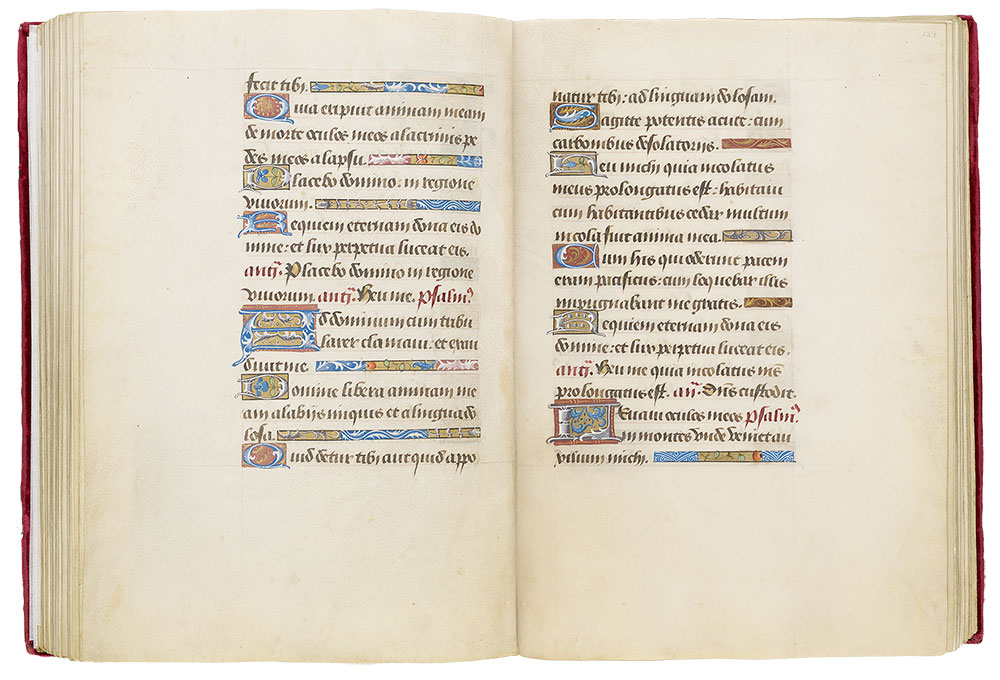
Hours of Henry VIII
Illuminated by Jean Poyer
Gift of the Heineman Foundation, 1977
MS H.8, fols. 129v–130r
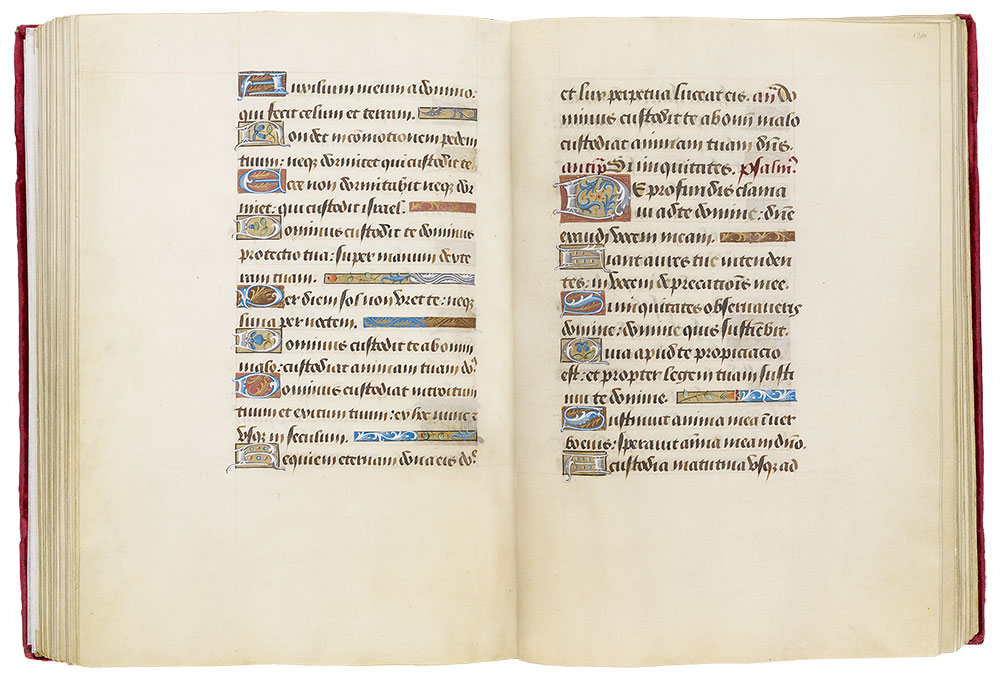
Hours of Henry VIII
Illuminated by Jean Poyer
Gift of the Heineman Foundation, 1977
MS H.8, fols. 130v–131r
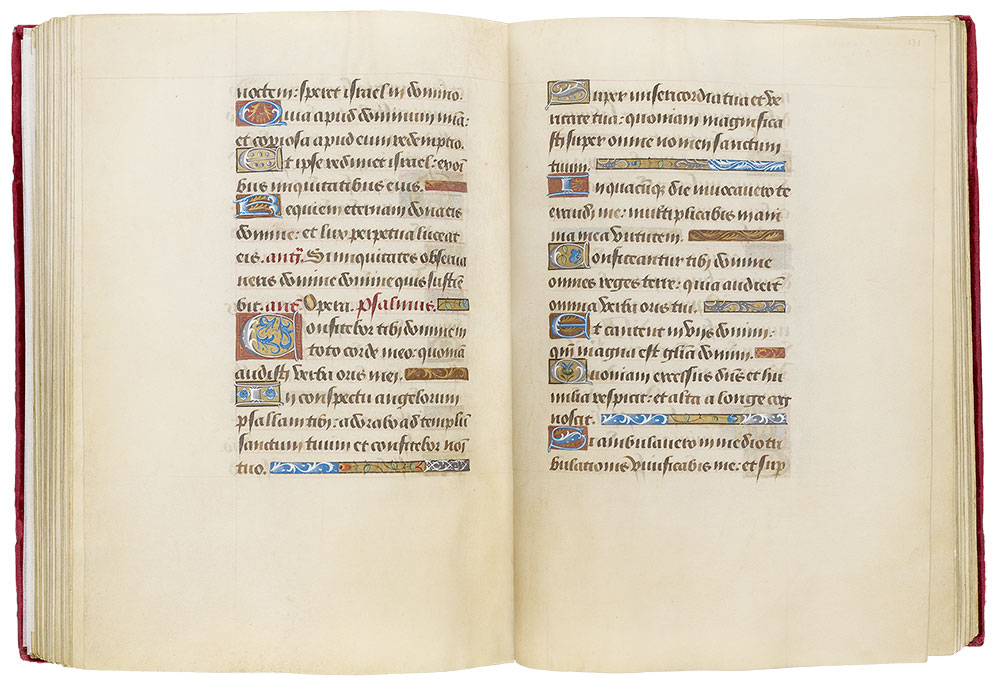
Hours of Henry VIII
Illuminated by Jean Poyer
Gift of the Heineman Foundation, 1977
MS H.8, fols. 131v–132r
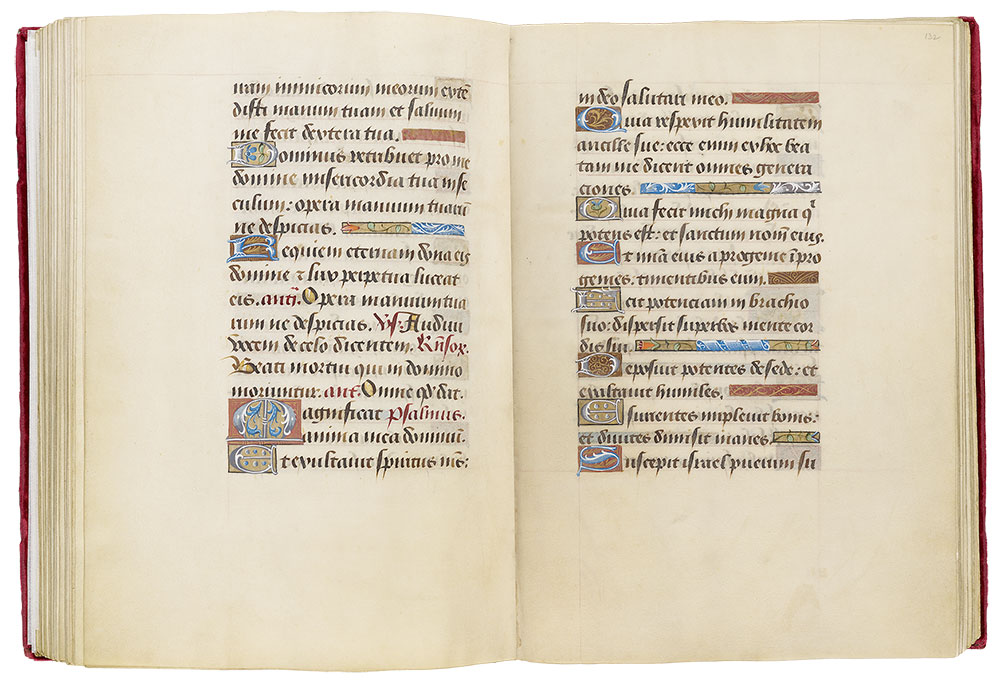
Hours of Henry VIII
Illuminated by Jean Poyer
Gift of the Heineman Foundation, 1977
MS H.8, fols. 132v–133r
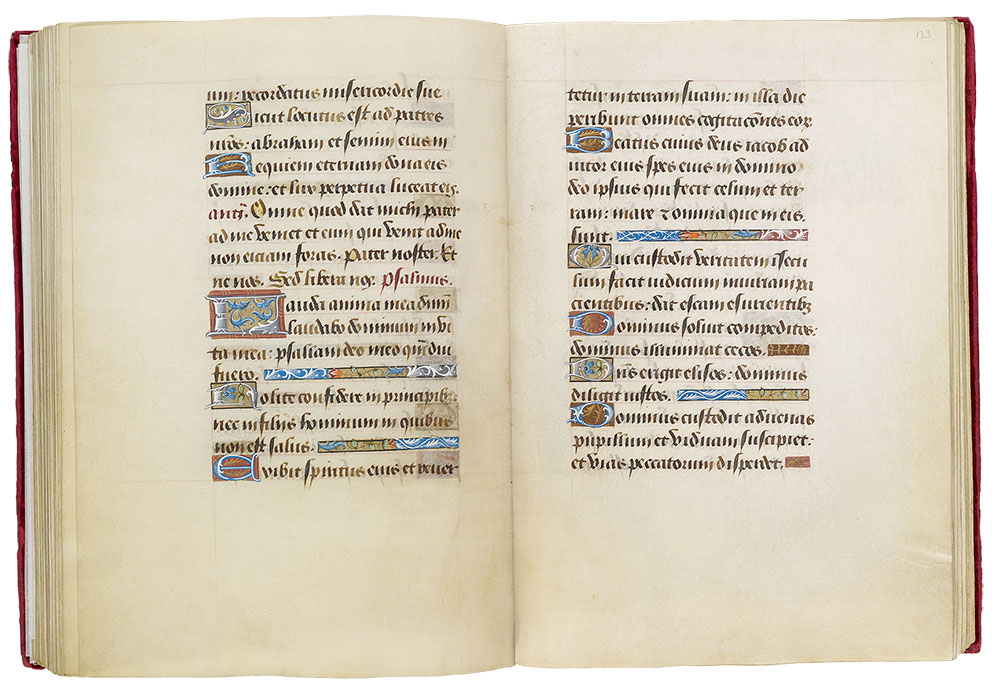
Hours of Henry VIII
Illuminated by Jean Poyer
Gift of the Heineman Foundation, 1977
MS H.8, fols. 133v–134r
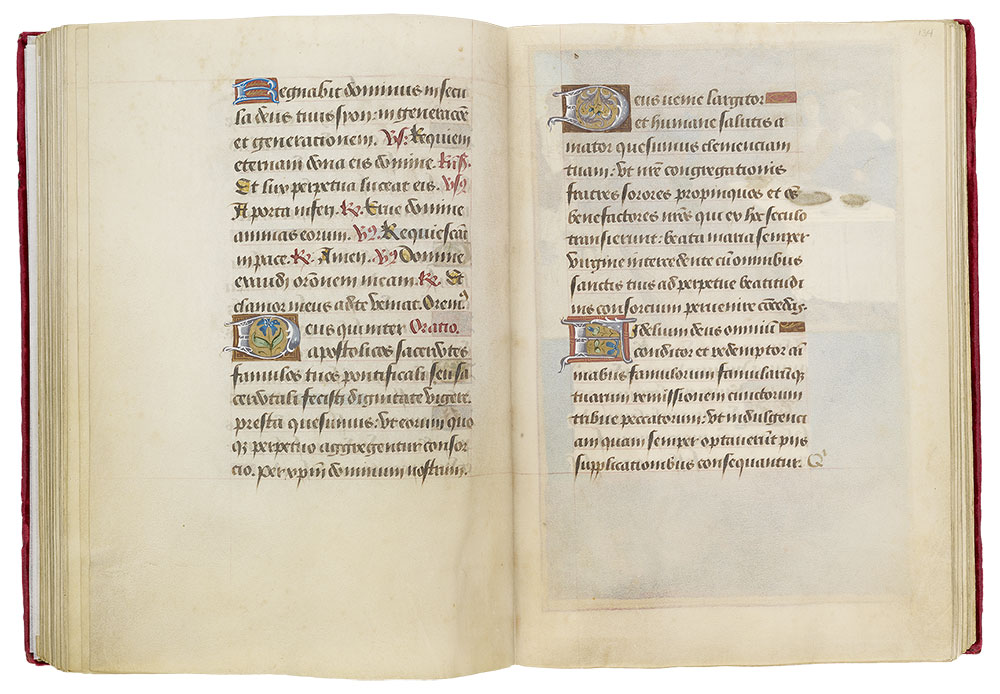
Hours of Henry VIII
Illuminated by Jean Poyer
Gift of the Heineman Foundation, 1977
MS H.8, fols. 134v–135r
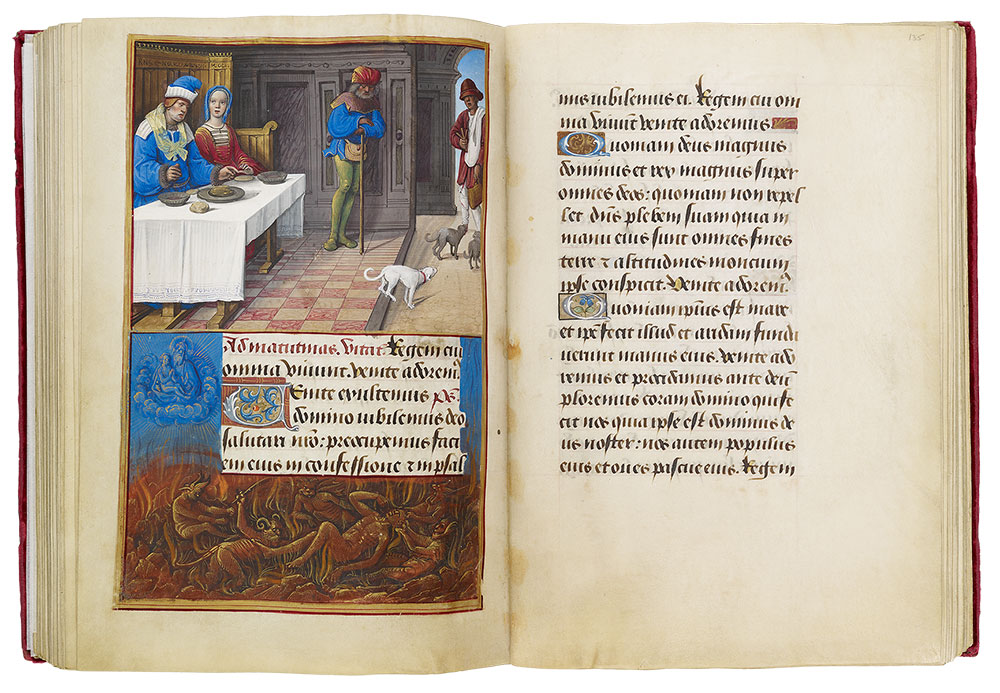
Matins: Feast of Dives
Hours of Henry VIII
Illuminated by Jean Poyer
Gift of the Heineman Foundation, 1977
Matins: Feast of Dives
Border: Dives in Hell (fol. 134v)
The second illustration for the Office of the Dead is smaller and is laid out like the Calendar and Suffrages, where half-page miniatures are in full color and marginal scenes in grisaille.
In the miniature the elegantly dressed rich man and his wife are about to enjoy a meal; Dives, who receives a glance from his wife, looks with disdain at a poor man named Lazarus entering the banquet hall.
The main subject of this illustration is the Feast of Dives, which derives from Luke's parable of the rich man (16:19–31). According to the story an unnamed rich man (Latin: dives) ate sumptuous meals every day in full view of a poor man named Lazarus.
Lazarus sought only the crumbs that fell from the rich man's table; however, while none were given him, the rich man's dogs came and licked Lazarus's sores. The beggar died and was carried by angels to Abraham's bosom.
A disinterested attendant stands nearby, while three dogs head toward Lazarus, who carries a small wooden keg and a clapper to warn passersby that he is a leper.
Abraham replied that he had received good things in his lifetime, while Lazarus had received evil things, but now Lazarus would be comforted while he would be tormented. It is, of course, significant that the poor man is worthy of being named while the rich man is not (this Lazarus, not to be confused with the Lazarus resurrected by Christ, has his feast day on June 21).
Down below, in the flames of hell (appropriately painted in red grisaille), Dives sees Lazarus in the bosom of Abraham (in heavenly blue grisaille) and points to his mouth, a reference to his unfulfilled request. The rich man died and ended up in hell, where, in considerable torment, he lifted his eyes and saw the dead Lazarus cradled by the patriarch. Suffering hell's flames (cf. lower half of image), the rich man asked Abraham to have Lazarus dip the tip of his finger in water and cool his tongue.
MS H.8, fols. 135v–136r
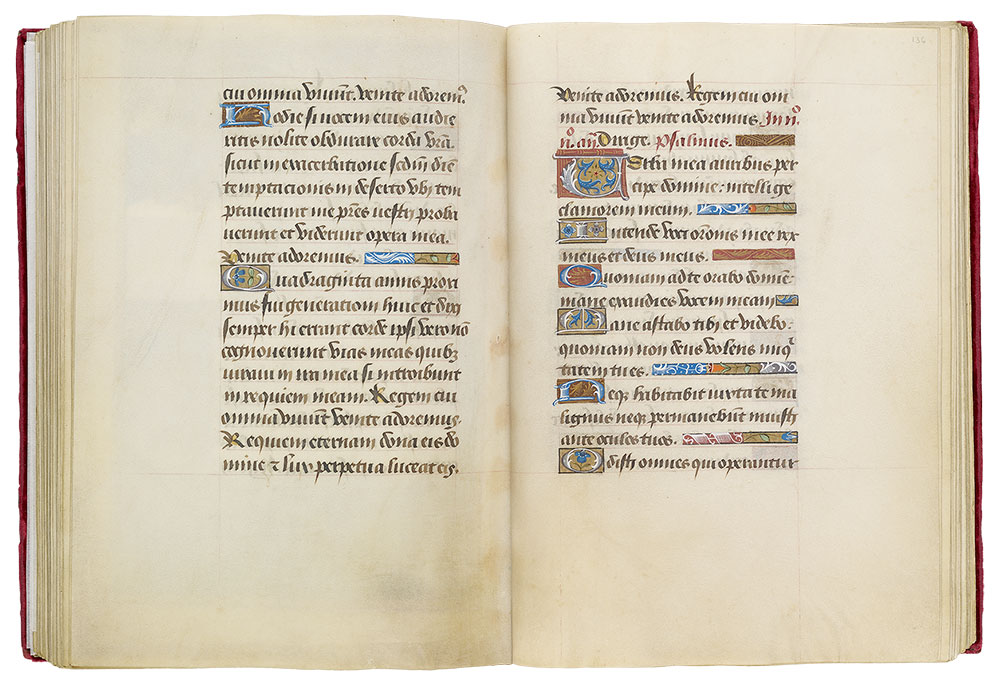
Hours of Henry VIII
Illuminated by Jean Poyer
Gift of the Heineman Foundation, 1977
MS H.8, fols. 136v–137r
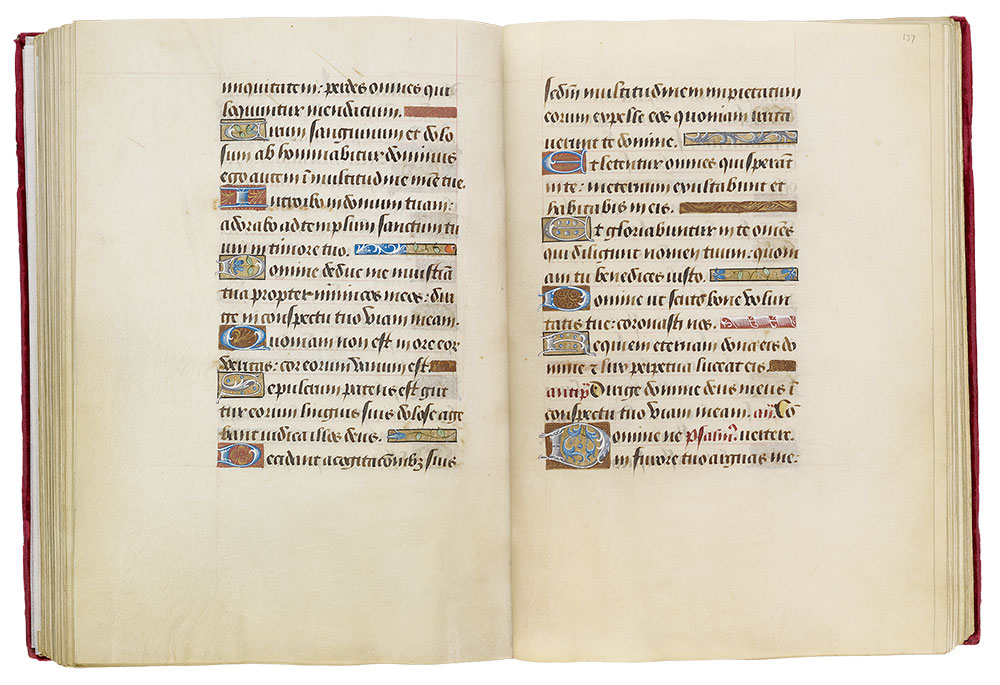
Hours of Henry VIII
Illuminated by Jean Poyer
Gift of the Heineman Foundation, 1977
MS H.8, fols. 137v–138r
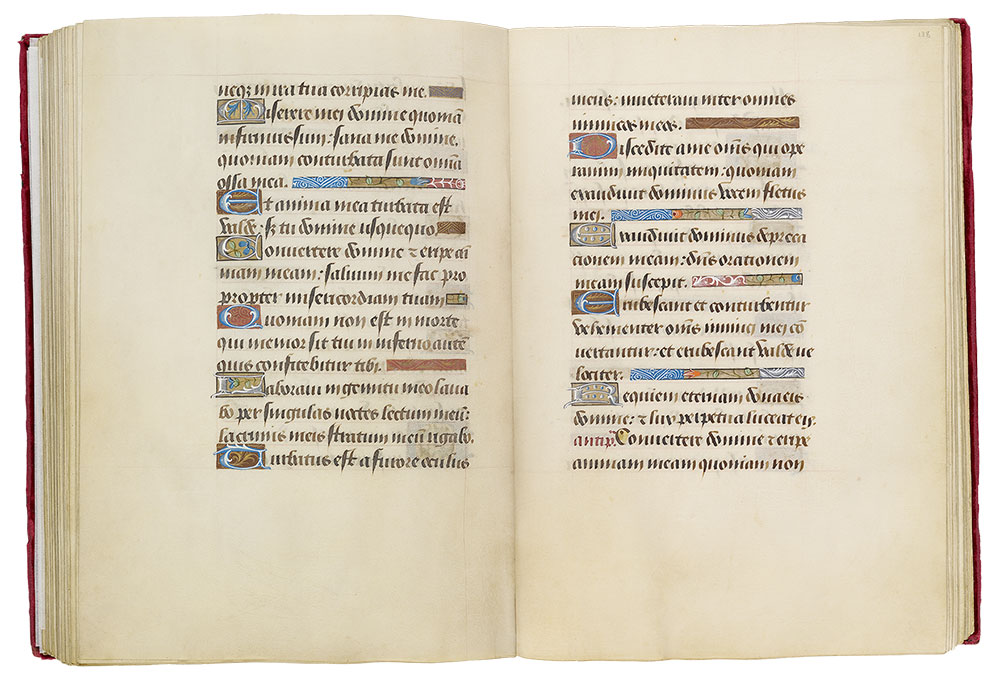
Hours of Henry VIII
Illuminated by Jean Poyer
Gift of the Heineman Foundation, 1977
MS H.8, fols. 138v–139r
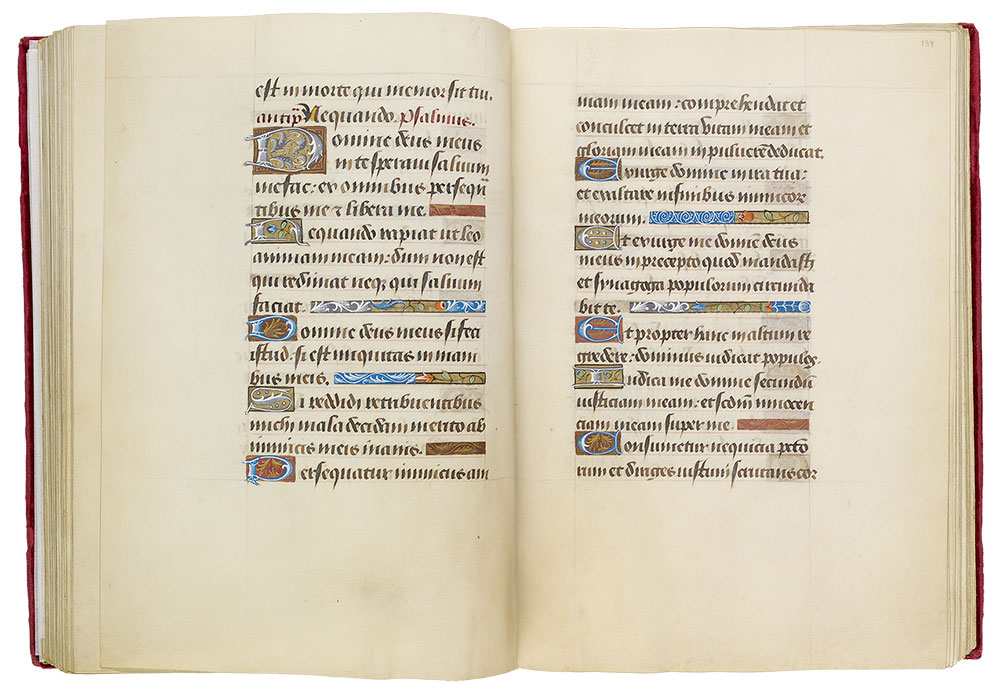
Hours of Henry VIII
Illuminated by Jean Poyer
Gift of the Heineman Foundation, 1977
MS H.8, fols. 139v–140r
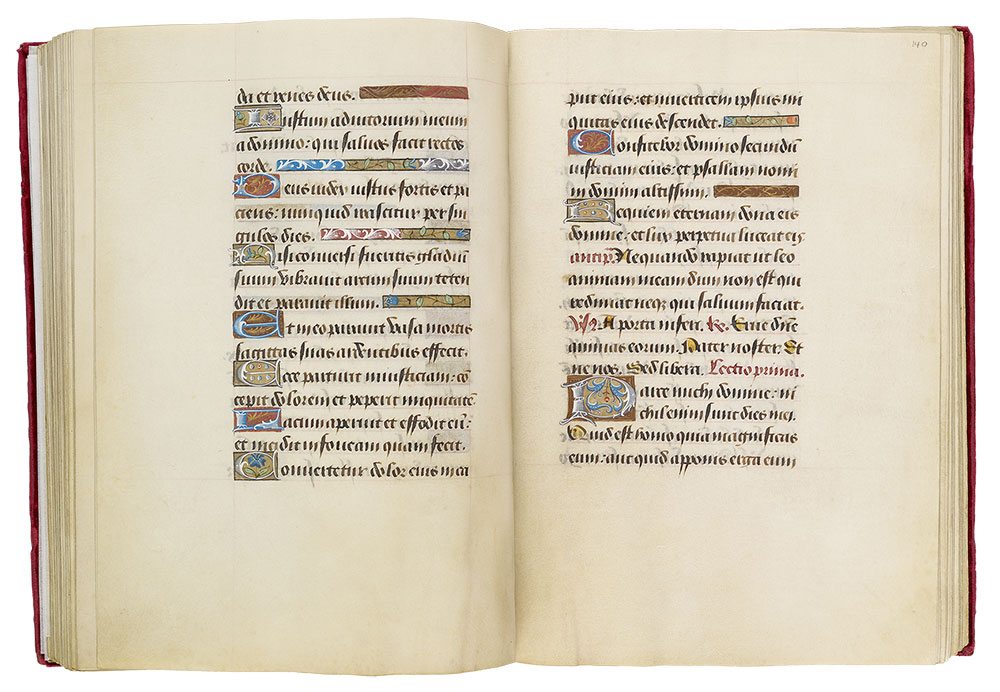
Hours of Henry VIII
Illuminated by Jean Poyer
Gift of the Heineman Foundation, 1977
MS H.8, fols. 140v–141r
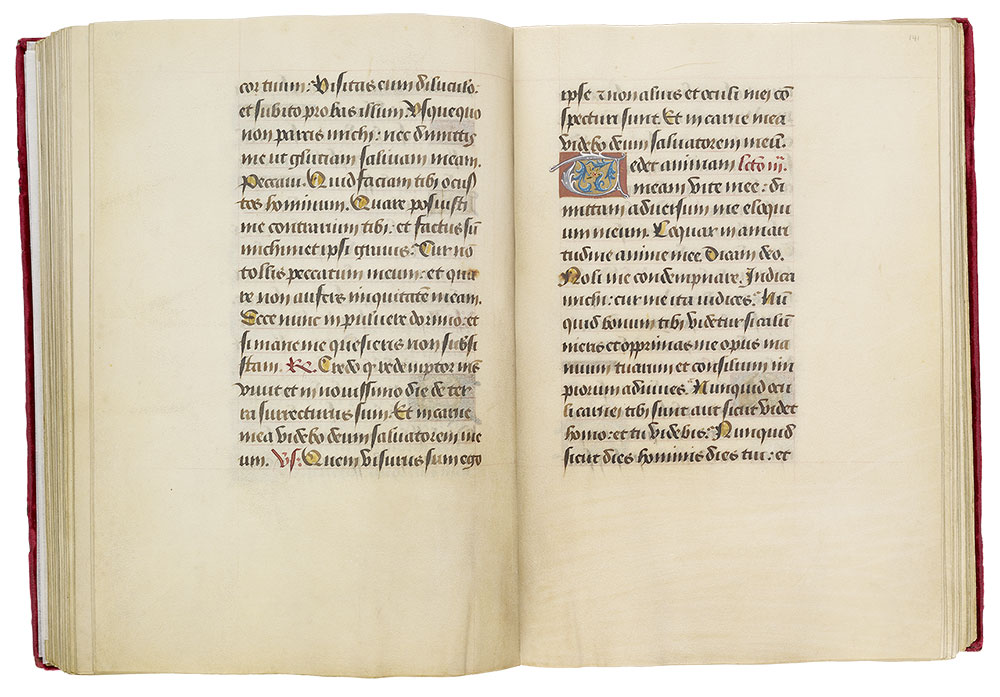
Hours of Henry VIII
Illuminated by Jean Poyer
Gift of the Heineman Foundation, 1977
MS H.8, fols. 141v–142r
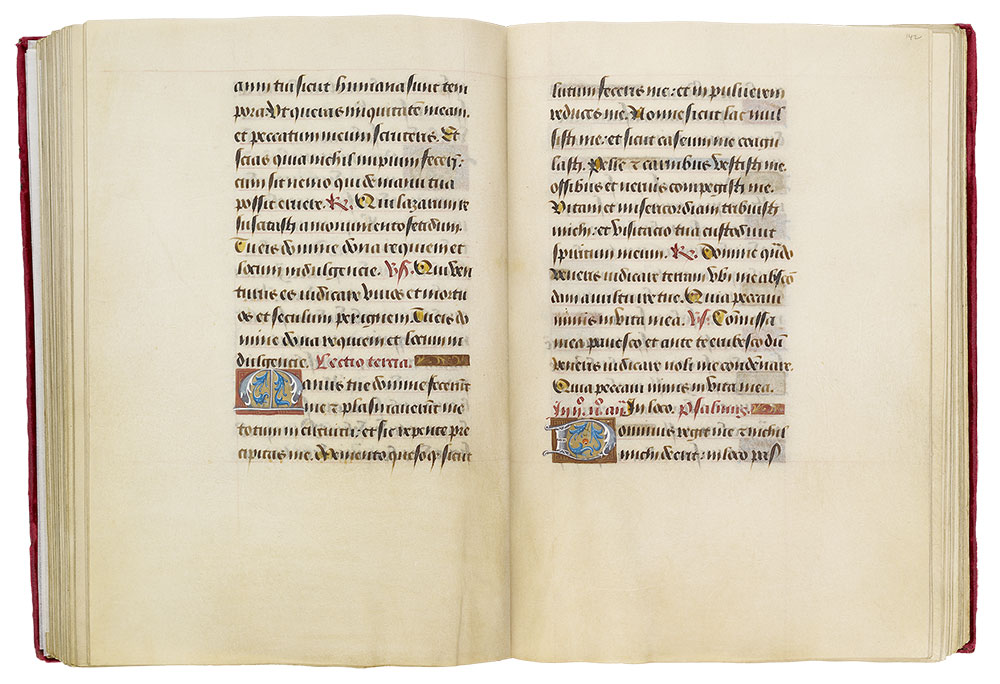
Hours of Henry VIII
Illuminated by Jean Poyer
Gift of the Heineman Foundation, 1977
MS H.8, fols. 142v–143r
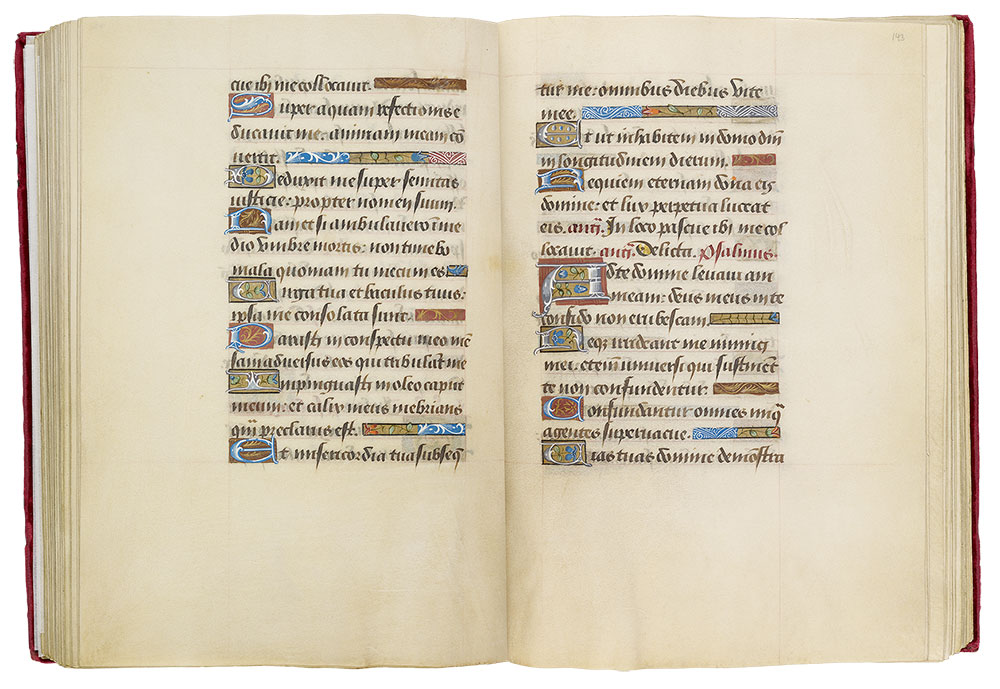
Hours of Henry VIII
Illuminated by Jean Poyer
Gift of the Heineman Foundation, 1977
MS H.8, fols. 143v–144r
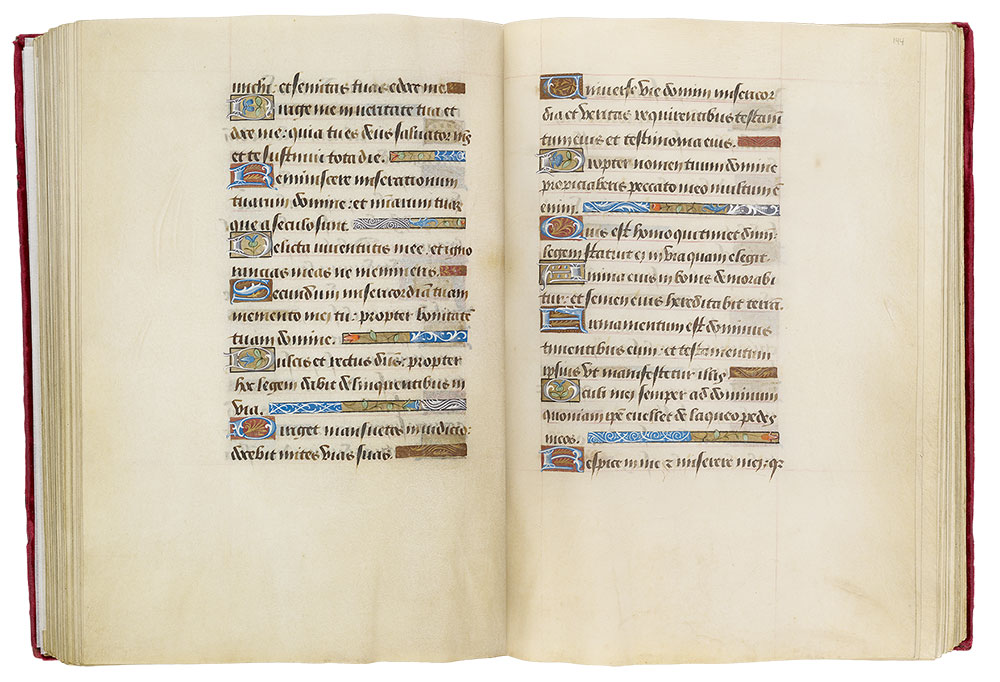
Hours of Henry VIII
Illuminated by Jean Poyer
Gift of the Heineman Foundation, 1977
MS H.8, fols. 144v–145r
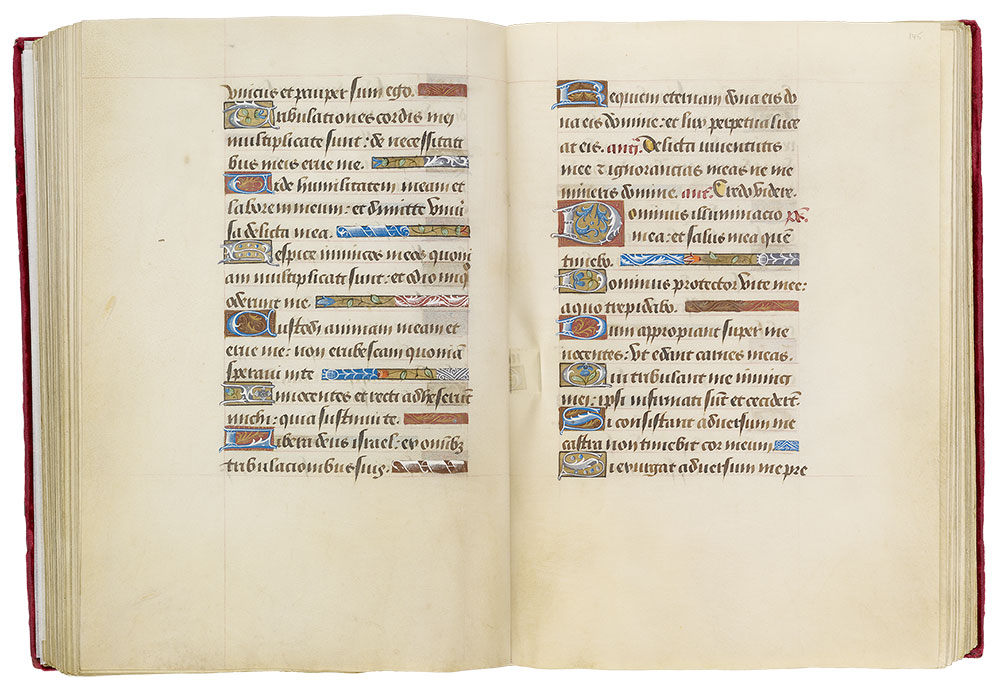
Hours of Henry VIII
Illuminated by Jean Poyer
Gift of the Heineman Foundation, 1977
MS H.8, fols. 145v–146r
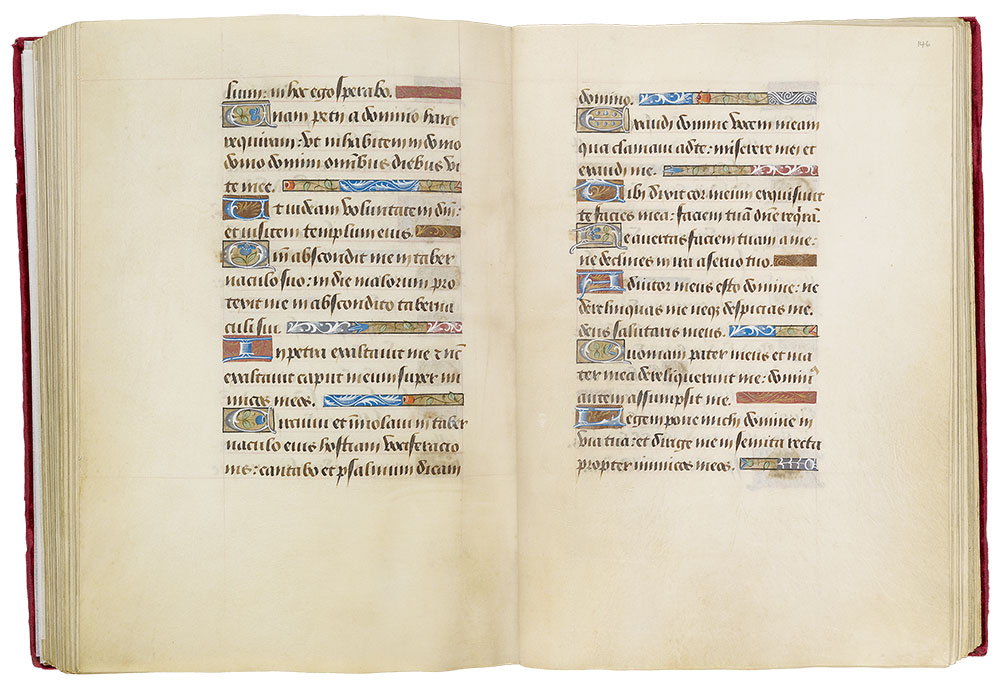
Hours of Henry VIII
Illuminated by Jean Poyer
Gift of the Heineman Foundation, 1977
MS H.8, fols. 146v–147r
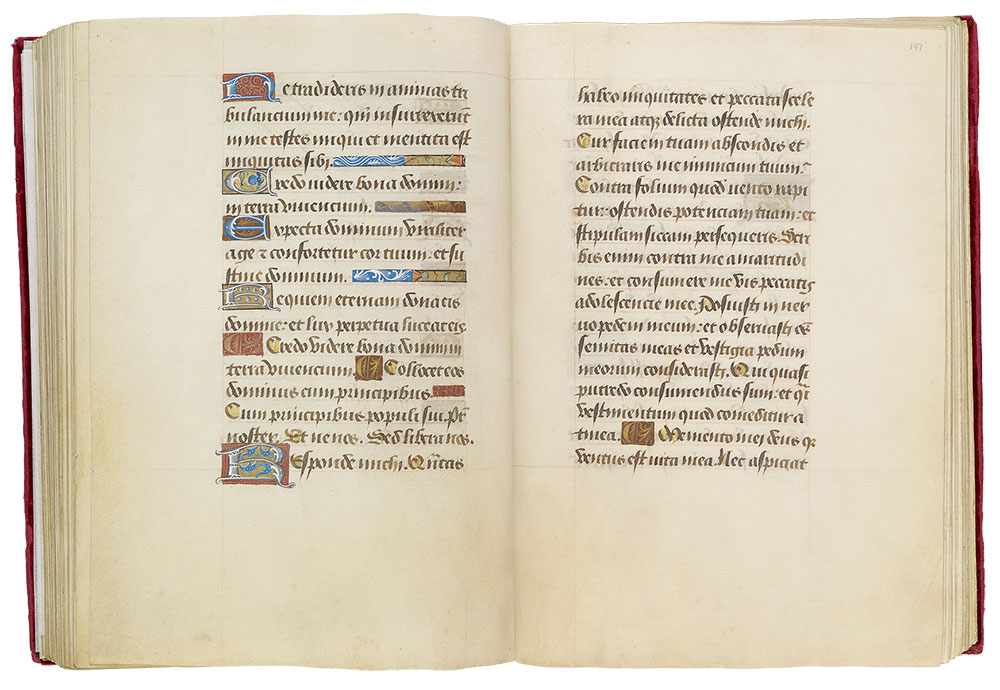
Hours of Henry VIII
Illuminated by Jean Poyer
Gift of the Heineman Foundation, 1977
MS H.8, fols. 147v–148r
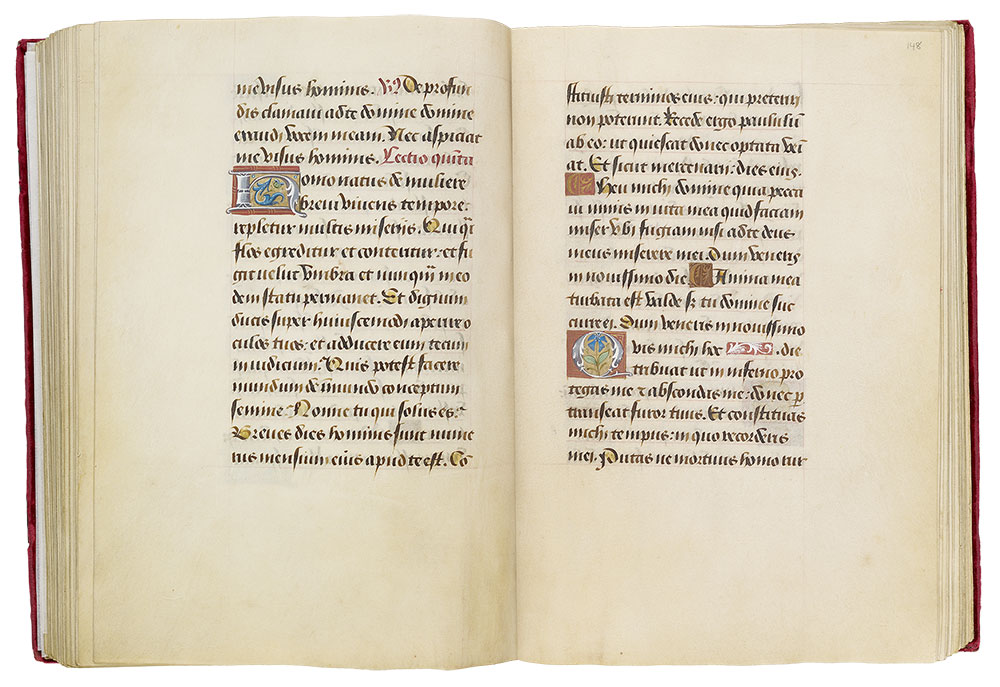
Hours of Henry VIII
Illuminated by Jean Poyer
Gift of the Heineman Foundation, 1977
MS H.8, fols. 148v–149r
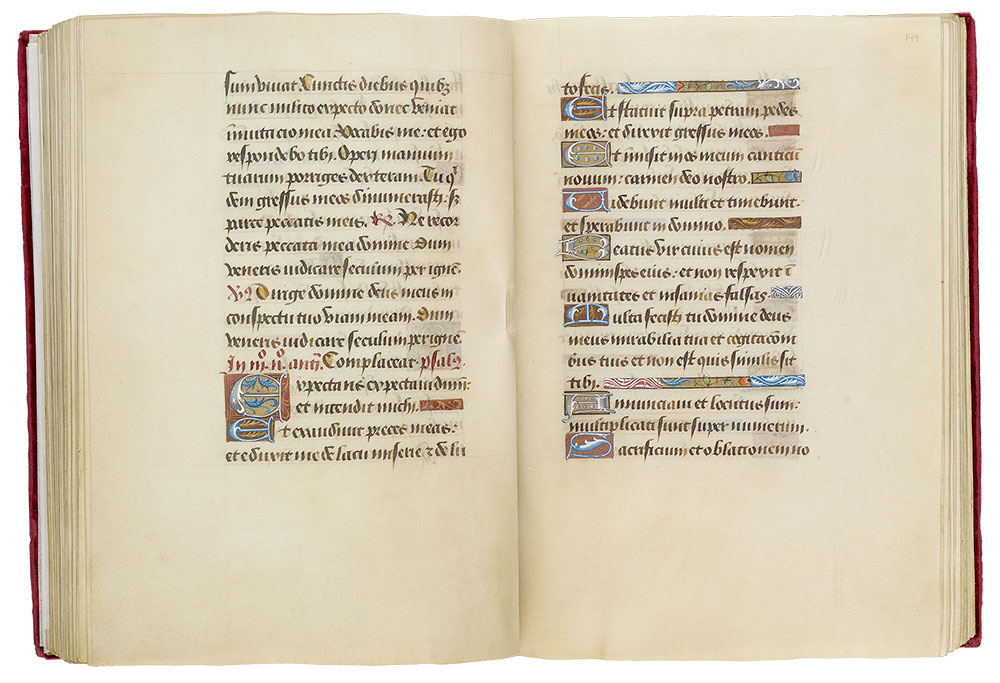
Hours of Henry VIII
Illuminated by Jean Poyer
Gift of the Heineman Foundation, 1977
MS H.8, fols. 149v–150r
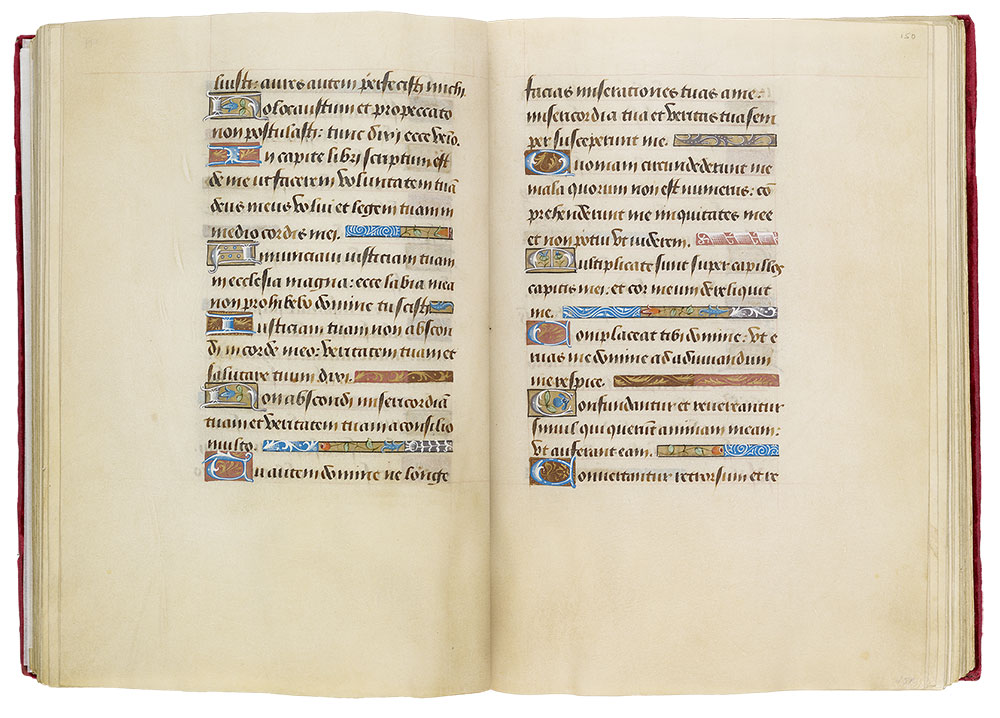
Hours of Henry VIII
Illuminated by Jean Poyer
Gift of the Heineman Foundation, 1977
MS H.8, fols. 150v–151r
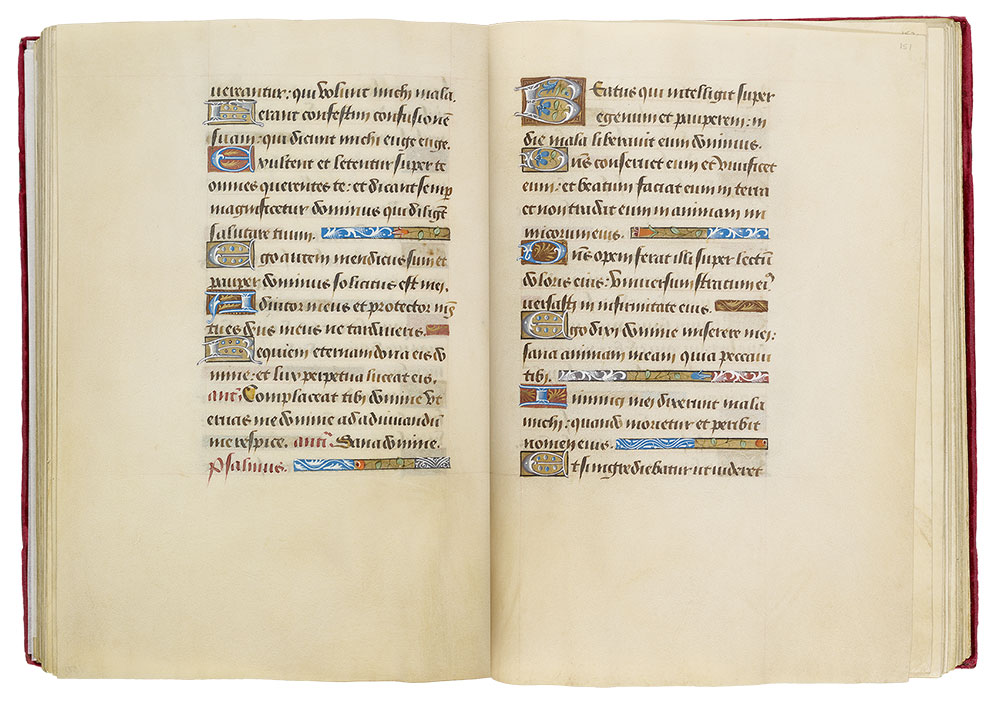
Hours of Henry VIII
Illuminated by Jean Poyer
Gift of the Heineman Foundation, 1977
MS H.8, fols. 151v–152r
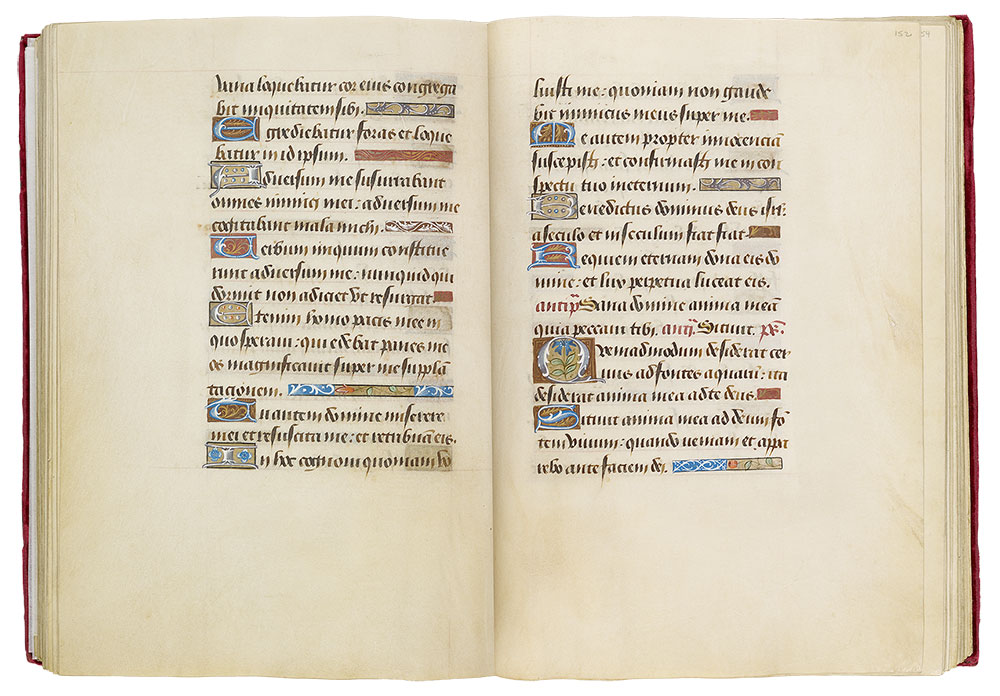
Hours of Henry VIII
Illuminated by Jean Poyer
Gift of the Heineman Foundation, 1977
MS H.8, fols. 152v–153r
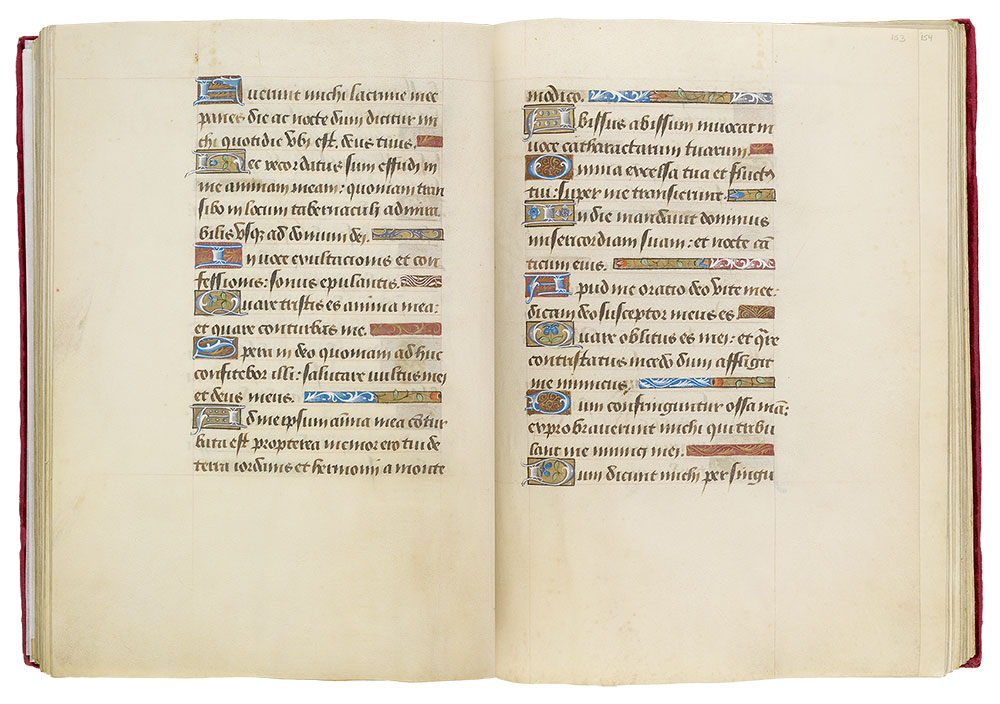
Hours of Henry VIII
Illuminated by Jean Poyer
Gift of the Heineman Foundation, 1977
MS H.8, fols. 153v–154r
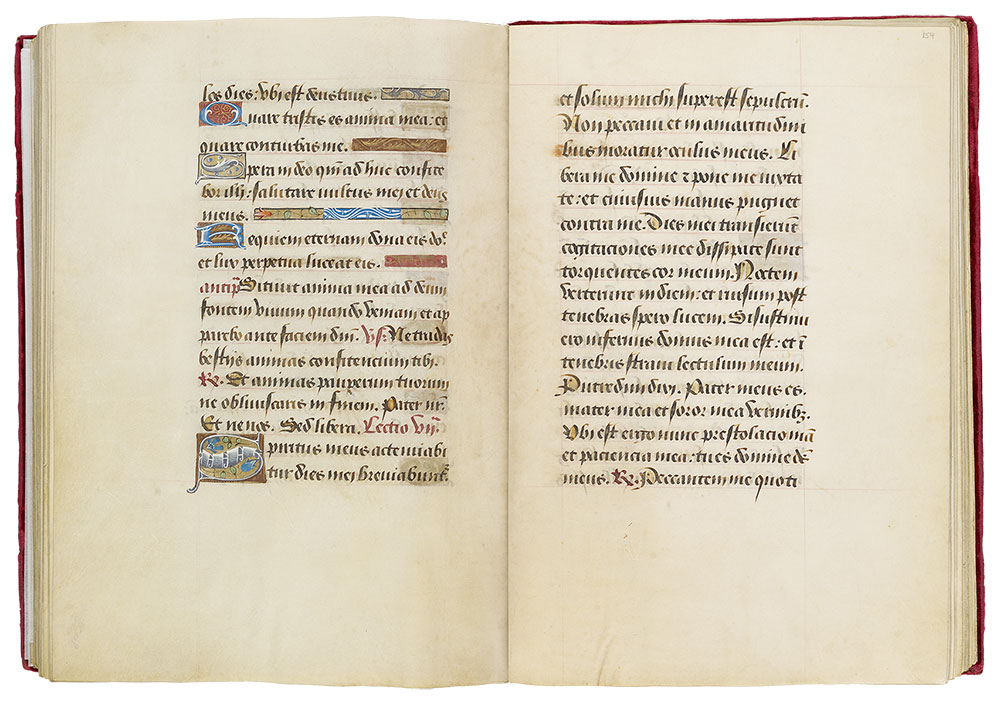
Hours of Henry VIII
Illuminated by Jean Poyer
Gift of the Heineman Foundation, 1977
MS H.8, fols. 154v–155r
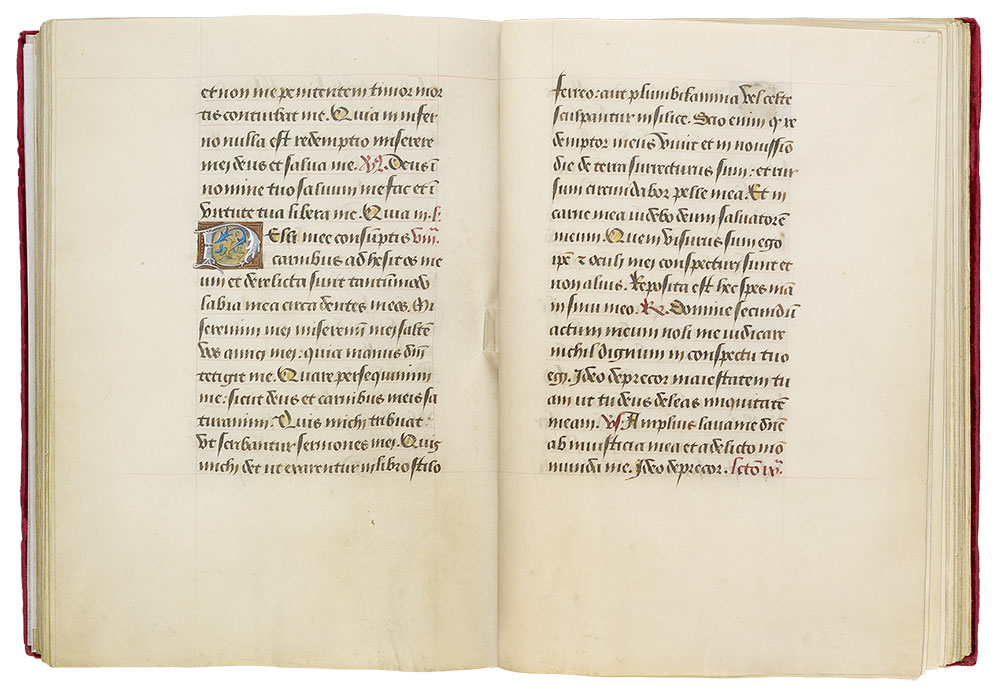
Hours of Henry VIII
Illuminated by Jean Poyer
Gift of the Heineman Foundation, 1977
MS H.8, fols. 155v–156r
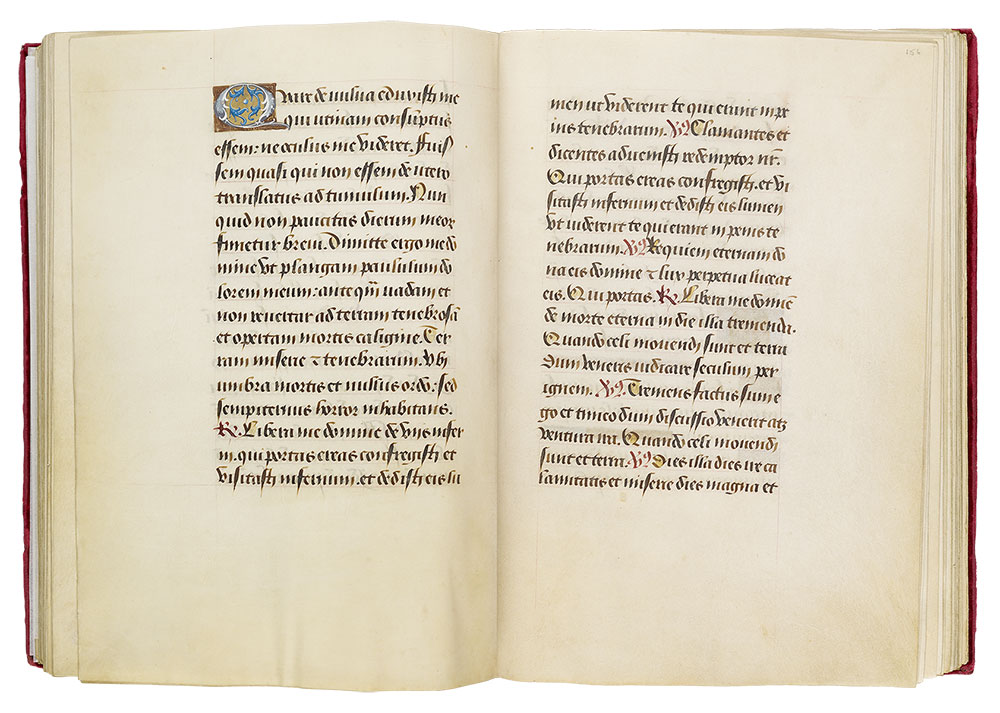
Hours of Henry VIII
Illuminated by Jean Poyer
Gift of the Heineman Foundation, 1977
MS H.8, fols. 156v–157r
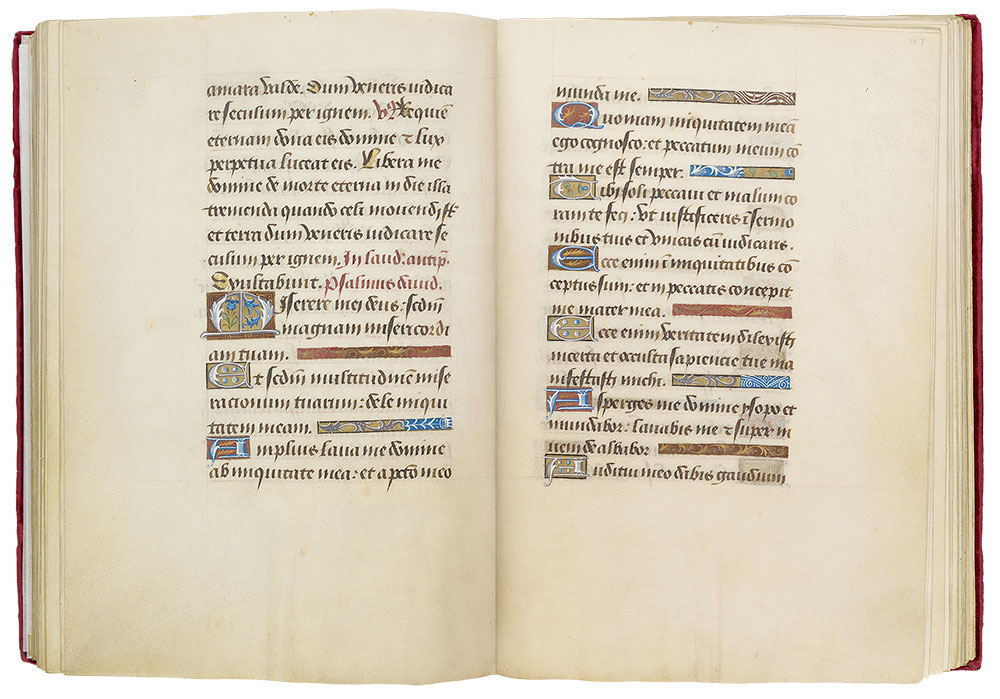
Hours of Henry VIII
Illuminated by Jean Poyer
Gift of the Heineman Foundation, 1977
MS H.8, fols. 157v–158r
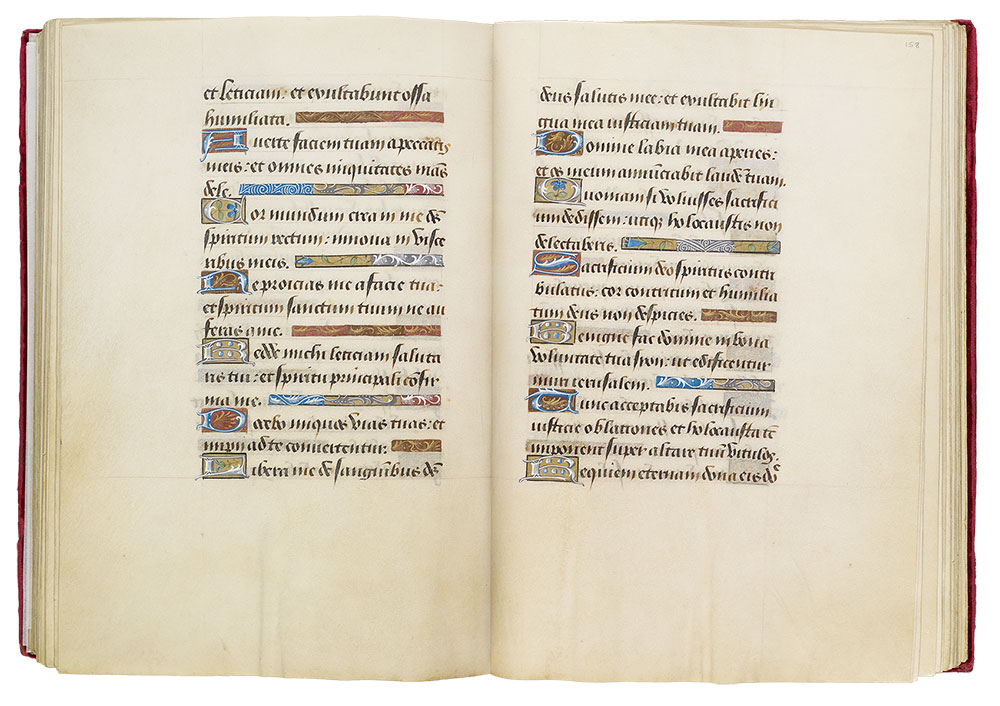
Hours of Henry VIII
Illuminated by Jean Poyer
Gift of the Heineman Foundation, 1977
MS H.8, fols. 158v–159r
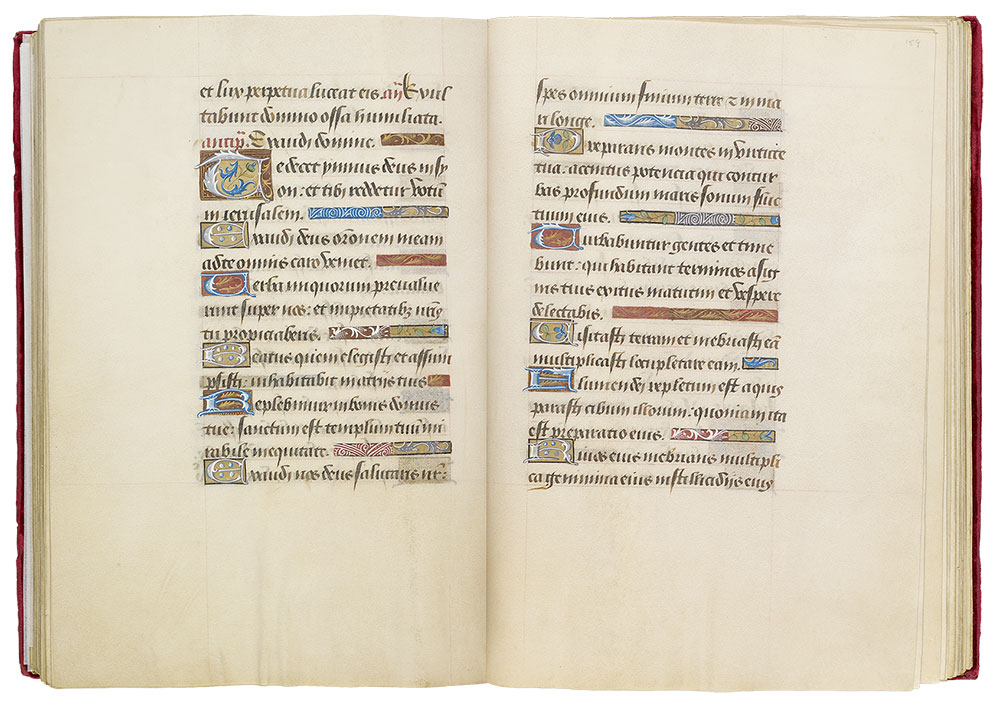
Hours of Henry VIII
Illuminated by Jean Poyer
Gift of the Heineman Foundation, 1977
MS H.8, fols. 159v–160r
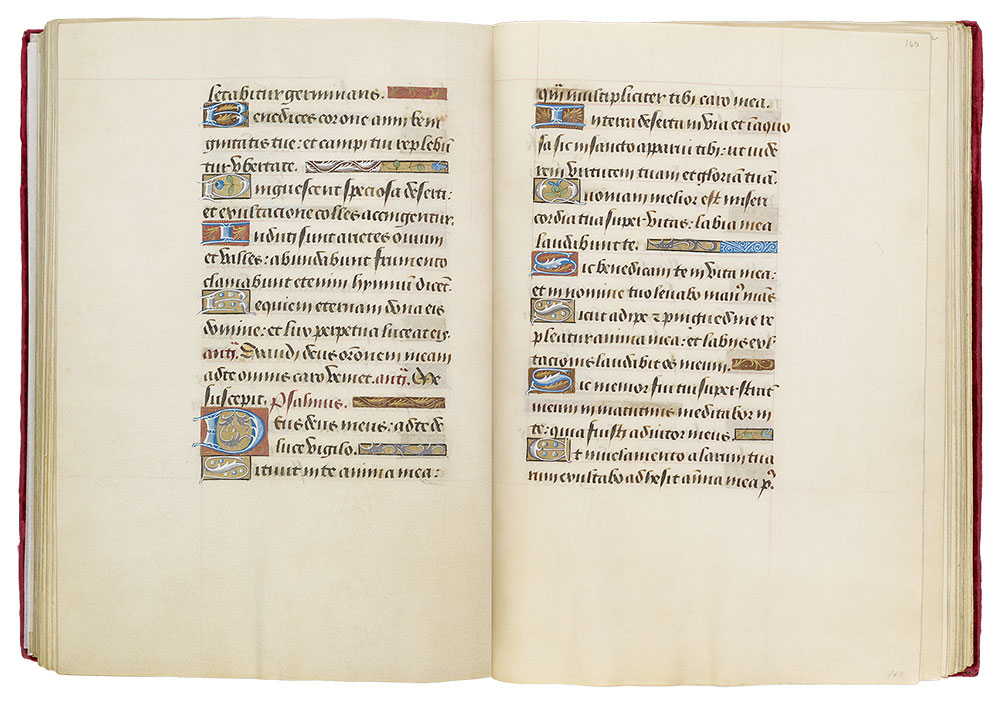
Hours of Henry VIII
Illuminated by Jean Poyer
Gift of the Heineman Foundation, 1977
MS H.8, fols. 160v–161r
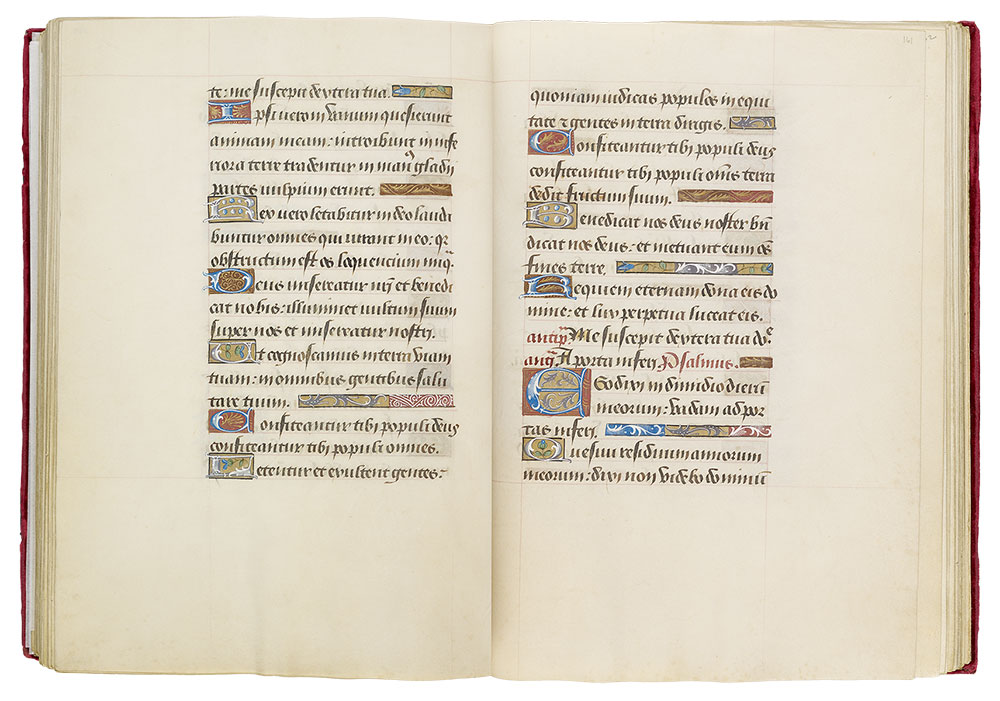
Hours of Henry VIII
Illuminated by Jean Poyer
Gift of the Heineman Foundation, 1977
MS H.8, fols. 161v–162r
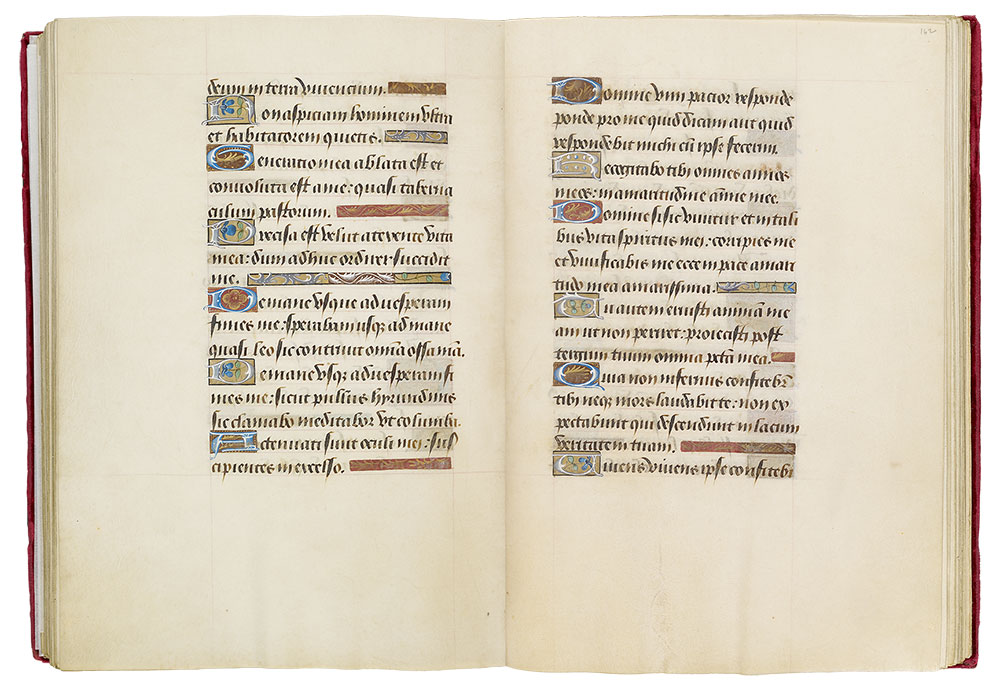
Hours of Henry VIII
Illuminated by Jean Poyer
Gift of the Heineman Foundation, 1977
MS H.8, fols. 162v–163r
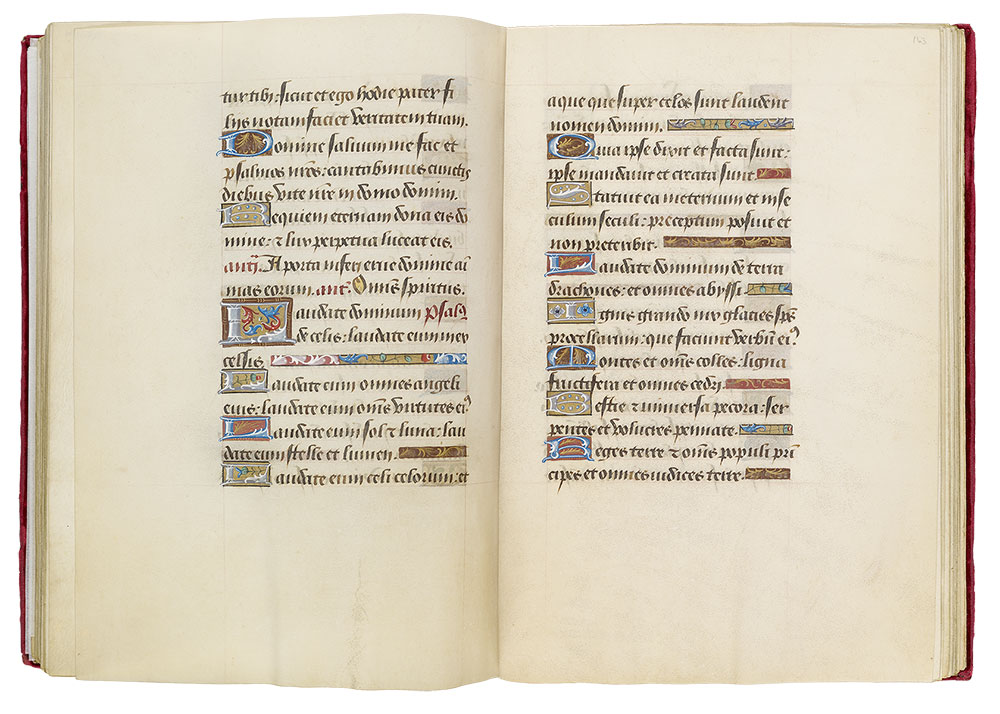
Hours of Henry VIII
Illuminated by Jean Poyer
Gift of the Heineman Foundation, 1977
MS H.8, fols. 163v–164r
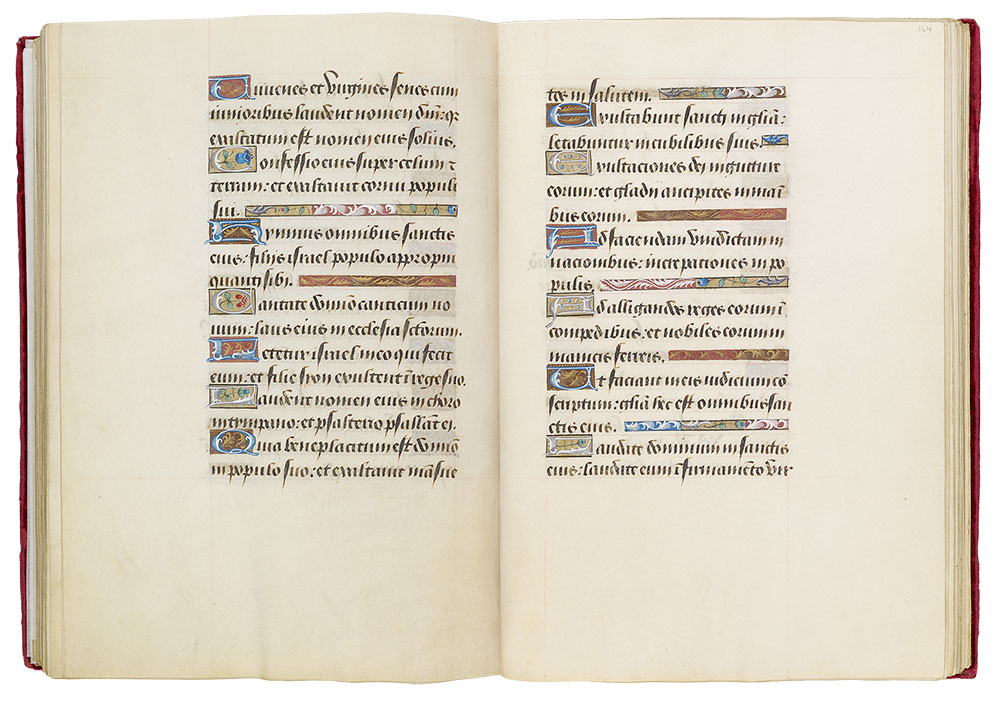
Hours of Henry VIII
Illuminated by Jean Poyer
Gift of the Heineman Foundation, 1977
MS H.8, fols. 164v–165r
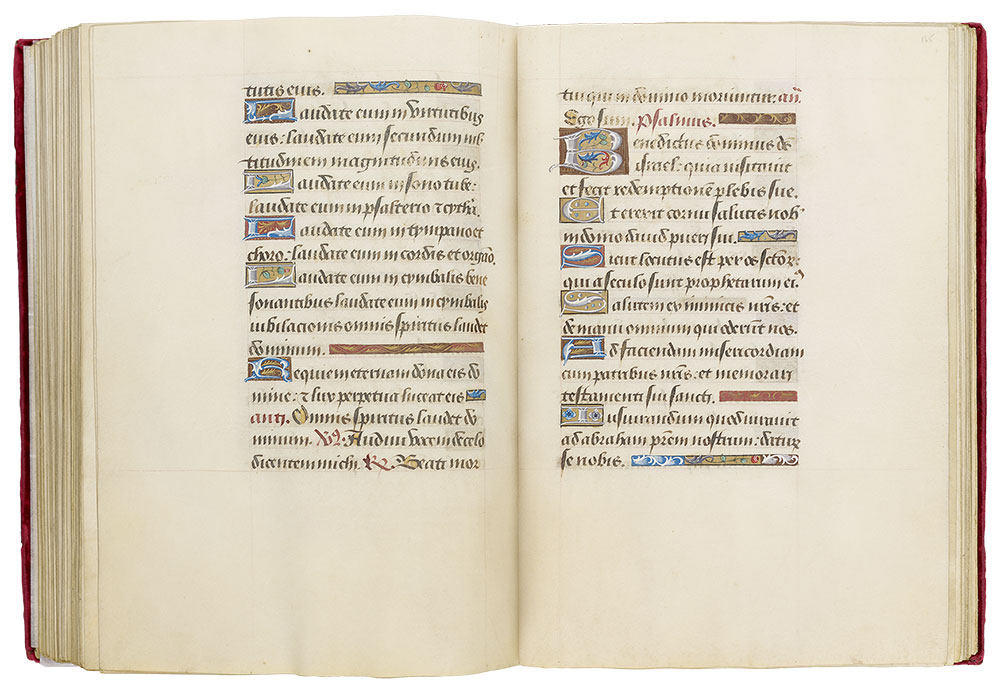
Hours of Henry VIII
Illuminated by Jean Poyer
Gift of the Heineman Foundation, 1977
MS H.8, fols. 165v–166r
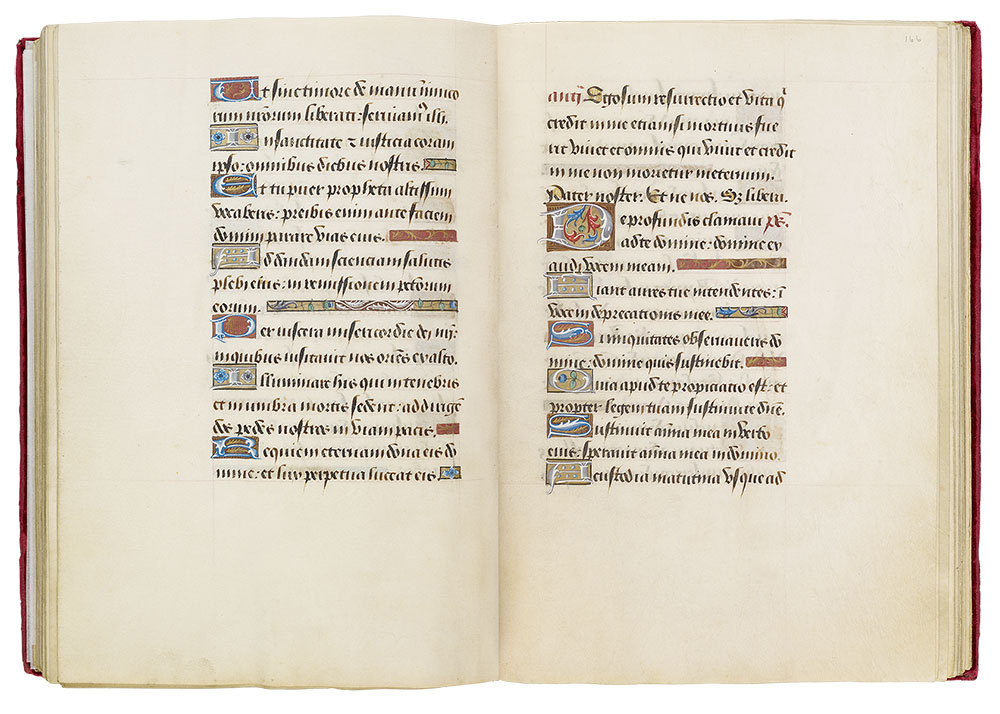
Hours of Henry VIII
Illuminated by Jean Poyer
Gift of the Heineman Foundation, 1977
MS H.8, fols. 166v–167r
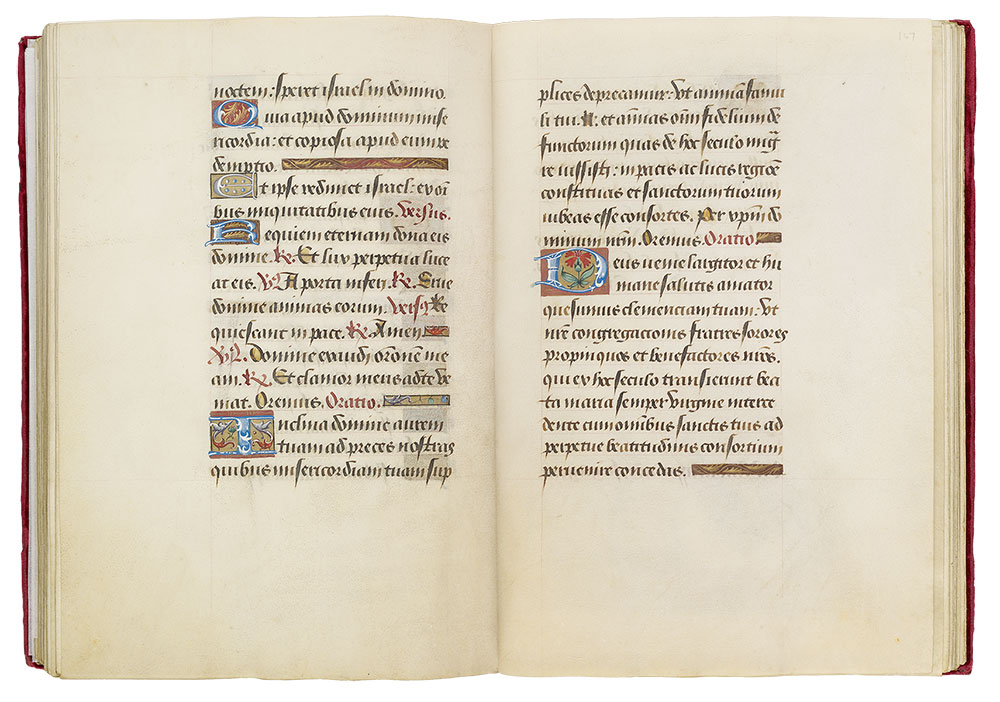
Hours of Henry VIII
Illuminated by Jean Poyer
Gift of the Heineman Foundation, 1977